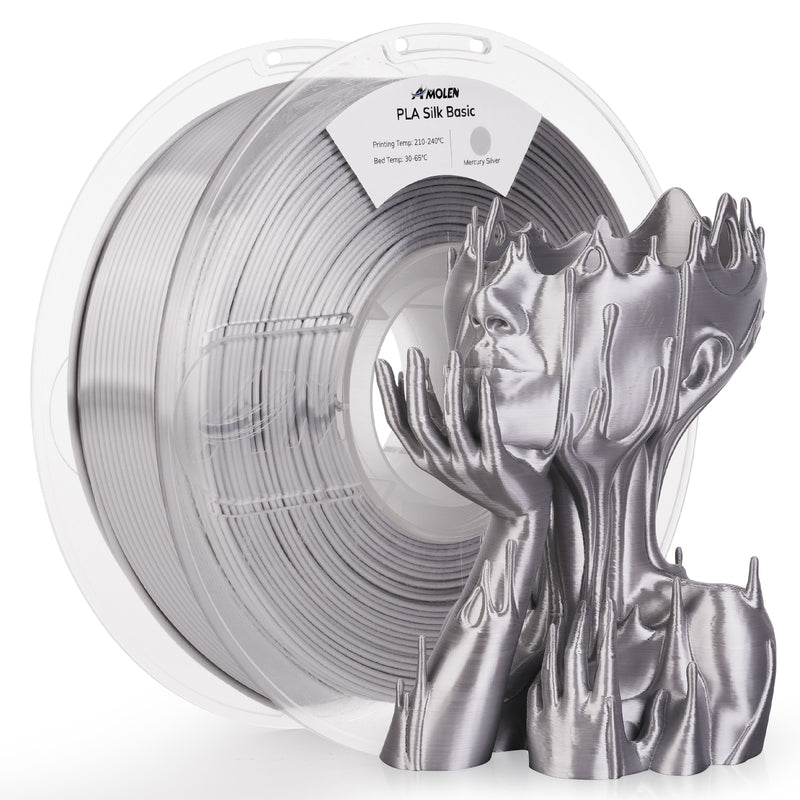Unlock the Secrets of 1.75 mm PLA Filament: What Every Maker Needs to Know!
In the vibrant world of 3D printing, the choice of filament can significantly impact the success of your projects. Among the various options available, 1.75 mm PLA filament has emerged as a popular choice, particularly for those new to the craft. Its versatility, ease of use, and reliable performance make it a staple in many makers' toolkits.

PLA, or Polylactic Acid, is a biodegradable thermoplastic derived from renewable resources like cornstarch or sugarcane. This eco-friendly material is commonly used for both professional and personal 3D printing applications, ranging from prototypes to intricate models. It is favored for its excellent printability and aesthetic finishes.
This article aims to provide comprehensive insights into 1.75 mm PLA filament, covering its properties, benefits, common applications, and tips for successful printing. Whether you are a seasoned printer or just starting your journey, understanding this filament will enhance your 3D printing experience.
Understanding 1.75 mm PLA Filament
1.75 mm PLA filament is a type of thermoplastic filament used in FDM (Fused Deposition Modeling) 3D printers. Its diameter of 1.75 mm is a standard size compatible with most 3D printers, making it a widely accessible option. The filament is produced through a process that ensures consistent diameter and quality, which is critical for successful printing.
When it comes to physical properties, PLA filament stands out for its ease of use and printability. It has a tensile strength that allows for durable prints while remaining flexible enough to create intricate designs. Additionally, PLA has a melting point of around 180-220°C, which means it can be printed at lower temperatures compared to other materials, reducing the risk of warping and improving layer adhesion.
Benefits of Using 1.75 mm PLA Filament
One of the primary advantages of PLA over other types of filament, such as ABS, is its user-friendliness. PLA does not emit harmful fumes during printing, making it suitable for home environments and educational settings. Furthermore, it adheres well to the print bed, reducing the likelihood of failed prints.
From an environmental perspective, PLA is an excellent choice for makers who are conscious of their ecological footprint. Being biodegradable, it breaks down more easily than petroleum-based plastics, which contributes to reducing plastic waste. This eco-friendliness makes PLA an ideal choice for projects that prioritize sustainability.
Common Applications of 1.75 mm PLA Filament
1.75 mm PLA filament is versatile and is commonly used in various applications. In the prototyping realm, designers frequently use PLA for creating functional prototypes due to its ease of printing and good surface finish. It is also popular in educational settings, where students can learn about 3D design and printing without the complexities associated with other filament types.
Hobbyists often turn to PLA for creating decorative items, toys, and even household gadgets. For instance, friends of mine who are avid 3D printing enthusiasts have created everything from custom phone holders to intricate miniatures. The possibilities are endless, and the filament allows for a wide array of creative expressions.
Choosing the Right 1.75 mm PLA Filament
When selecting PLA filament, there are several factors to consider. The precision of the filament's diameter is crucial; a consistent 1.75 mm diameter ensures reliable feeding into the printer. Additionally, color options abound, allowing creators to choose from a vast spectrum to suit their project needs.
To identify quality filament, look for reputable suppliers who provide specifications and test results. High-quality filament will have minimal impurities and produce consistent results throughout the print. Personal experiences from fellow makers suggest that investing in quality filament pays off in terms of print quality and fewer headaches during the printing process.
Tips for Printing with 1.75 mm PLA Filament
Successful printing with 1.75 mm PLA filament requires attention to detail and some practical tips. First and foremost, ensure that your printer is calibrated correctly, as this can drastically affect print quality. Recommended temperature settings for PLA typically range from 190 to 220°C, but it’s essential to experiment with your specific printer to find the optimal settings.
Bed adhesion is another critical aspect; using a heated bed or applying adhesive solutions can help prevent warping. If you encounter common issues such as stringing or under-extrusion, adjusting the retraction settings and ensuring the filament is dry can resolve most problems. A friend of mine learned this the hard way after a few frustrating prints but found success by keeping his filament in a sealed container.
Maximizing Your 3D Printing Success with PLA
In conclusion, 1.75 mm PLA filament is a fantastic material for anyone interested in 3D printing. Its user-friendly properties, environmental benefits, and versatility make it an attractive choice for a wide range of applications. Understanding the intricacies of this filament, from its physical properties to the best practices for printing, can significantly enhance your projects.
As you embark on your 3D printing journey, I encourage you to experiment with PLA filament in various projects. Whether you’re prototyping, creating educational models, or pursuing hobbies, mastering the use of 1.75 mm PLA filament can unlock new creative possibilities. Happy printing!








